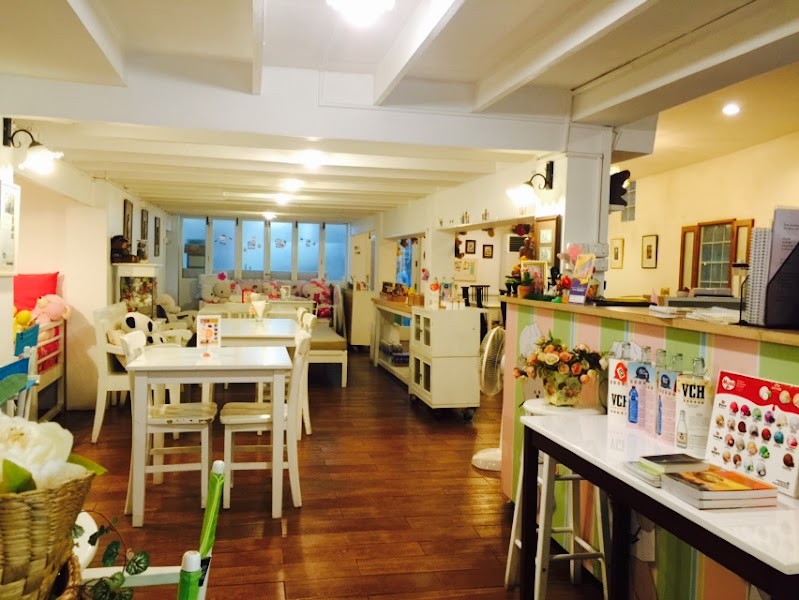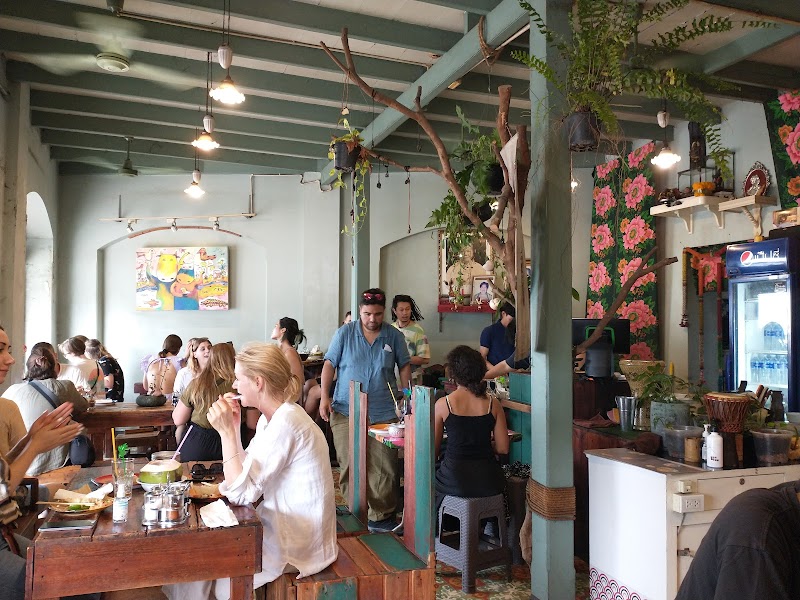Thailand is renowned for its diverse and flavorful cuisine, accessible to both locals and tourists alike. If you’re seeking budget-friendly dining options in Thailand, here are five excellent restaurants that offer delicious food at affordable prices:
- Khao Nee Rad Na (ข้าเหนียวราดหน้า):
This humble eatery in Bangkok serves a unique dish called Khao Nee Rad Na, a combination of stir-fried rice noodles topped with creamy gravy and served on sticky rice. The generous portions and affordable prices make it a popular choice for locals and budget-minded travelers.
- Pad Krapow Moo (ผัดกระเพราหมู):
Found in street food stalls and small restaurants across Thailand, Pad Krapow Moo is a classic stir-fried dish featuring minced pork, holy basil, and chili peppers. Served with rice, this aromatic dish is packed with flavor and is easy on the pocket.
- Gaeng Daeng (แกงแดง):
Also known as Red Curry, Gaeng Daeng is a staple dish found in many Thai restaurants. Made with coconut milk, red curry paste, and various vegetables and protein (such as chicken or tofu), this flavorful and rich curry is often served with rice or bread.
- Khao Pad (ข้าวผัด):
Fried rice is a common dish throughout Thailand and is a great option for a quick and affordable meal. Typically made with rice, vegetables, egg, and meat or seafood, Khao Pad is widely available in street stalls, markets, and restaurants.
- Boat Noodles (ก๋วยเตี๋ยวเรือ):
Originating in Ayutthaya, Boat Noodles are a popular street food dish consisting of rice noodles served in small bowls with a flavorful broth, often made with pork or beef. These bite-sized bowls are a great way to sample a variety of flavors at an affordable price.

The 7 Biggest Budget-Friendly Restaurant near Bangkok
Cheaper & Better Street Food
- Address: 20, 57-89 Si Lom, Suriya Wong, Bang Rak, Bangkok 10500, Thailand
- Map: Click here
- Rating: 4.5 (610)
- Phone: +66 83 817 4446
- Website:
- Opening hours:
Monday: 11:00 AM – 10:30 PMTuesday: 11:00 AM – 10:30 PMWednesday: 11:00 AM – 10:30 PMThursday: 11:00 AM – 10:30 PMFriday: 11:00 AM – 10:30 PMSaturday: 11:00 AM – 10:30 PMSunday: 11:00 AM – 10:30 PM - Reviews:
a week agoFriendly people, yummy food and very low prices. I got a pad thai and a mango shake and paid only 110 baht. They have a vegetarian menu and can also prepare vegetarian dishes on request!7 months agoKeep it short – Very lovely people, budget friendly, yummy foods, delicious fresh fruit smoothies (Mango or watermelon smoothie is unreal) and chill atmosphere.Need some info – Where to begin… the people here are most lovely. There’s moderately high foot traffic which means fresh food in and out. I mention this kindly, do not expect a Michelin dish meal as others dream for—this is street food not Jamie Oliver’s kitchen—for me this taste like home and there’s no place like it. I couldn’t resist the smoothies and decided to get one for morning and night. I will definitely miss the place, people and beautiful smiles; no doubt. Tip generously!
Be careful of incoming traffic as the walkway is narrow. Push through until you get to this place as it’s buried behind other food places! Be clear and precise with ordering, so point at the food item whilst ordering. Shalom peace with Jesus.
7 months agoHaving been to Bangkok quite a few years ago , I was quite surprised to see how modernised and clean the city was. Although I’m sure this is a good thing I found that some of the Thai hospitality and charm had been lost. We were ecstatic to find the old Bangkok here. Service amazing , food delicious, prices cheap and atmosphere authentic . Do your selves a favour and eat here ! Traditional Thai food in the city at its best. Ps pineapple fried rice is amazing and panang curry to die for .5 months agoGreat food! But remember to tell them to make it less spicy if you are not used to the Thai spicy level ?a year agoLet me preface this review by saying the owner, the man who meets and guests is LOVELY. Such a friendly man. I understand this is budget food but the dish was inedible. I would have rather went to a nicer restaurant as I will have to buy another meal on my way home.After reading the reviews I was very excited to try this place out, I walked 15 minutes to get here and was very hungry! I ordered my favourite dish, garlic chicken with a crispy fried egg. Very easy, I was just incredibly disappointed when it arrived like this.
I will post a secondary picture showing what this dish generally (in its most basic form, the dish with cucumber beside it) looks like (I eat it a lot). It was very wet, soggy, soupy and the chicken meat was very low quality full of cartilage. I couldn’t eat it. The fried egg was good, but that was it.
Sadly did not live up to the reviews. I’m sorry to the owner who was very friendly but he could see I did not eat my dish and not bother to ask what was wrong with it.
Yummy Yummy
- Address: 12-14 Ram Buttri, Chana Songkhram, Phra Nakhon, Bangkok 10200, Thailand
- Map: Click here
- Rating: 4.2 (147)
- Opening hours:
Monday: ClosedTuesday: 9:00 AM – 10:00 PMWednesday: 9:00 AM – 10:00 PMThursday: 9:00 AM – 10:00 PMFriday: 9:00 AM – 10:00 PMSaturday: 9:00 AM – 10:00 PMSunday: 9:00 AM – 10:00 PM - Reviews:
9 months agoLocated in the back street walk ways its a great little place to come and try local food. Close to lots of restaurants and bars but not to busy like other areas. Make sure you stop and have something to eat and walk a little bit further and teach some locals how to speak English.Food is amazing and worth stopping by with lots to choose from the menu in English and Thai.
a month agoWe had a pad Thai and cashew chicken. Very quick service and food was great! Love the little seating area with plastic chairs on the side of the street. It is a bit off the beaten Khao San Road path so it’s more quiet. Prices are good as well. 60 for pad Thai. Would recommend!a year agoLovely and fantastic. I came here twice. Great service lovely food and good atmosphere. Definitely worth a trip if you are in the area. Absolutely stunning. I highly recommend ! ???a year agoVery nice food at really affordable price. The service is quite fast as well so you don’t have to wait much for anything.We order a fried rice seafood, fried rice pineapple curry, a mango shake and a watermelon shake and we paid 210 thb.
3 months agoI love these local restaurants in Thailand and Yummy Yummy is a great spot to try local cuisine at an reasonable price. However if you don‘t like spicy food ask beforehand for non-spicy dishes. We had the penang curry and we just couldn‘t eat it as it was too spicy. The massaman curry was delucious. Lots of veggie options as you can always choose vegetables, tofu or meat.
THAI Sweet original Cheap and Yummy!
- Address: PGHM+65R, Khwaeng Suriya Wong, Khet Bang Rak, Bangkok 10500, Thailand
- Map: Click here
- Rating:
Jok Pochana
- Address: 34 Samsen Rd, Ban Phan Thom, Phra Nakhon, Bangkok 10200, Thailand
- Map: Click here
- Rating: 4.4 (1090)
Little Hut Thai Food and Waffle
- Address: ท้อง 2-09 อาคาร Nana Square, Sukhumvit Rd, Khlong Toei Nuea, Watthana, Bangkok 10110, Thailand
- Map: Click here
- Rating: 4.4 (22)
The Family
- Address: 1 6 Prachathipatai Rd, Khwaeng Ban Phan Thom, Khet Phra Nakhon, Bangkok 10200, Thailand
- Map: Click here
- Rating: 4.8 (1347)
Food + Plus
- Address: 392/43 Rama I Rd, Pathum Wan, Bangkok 10330, Thailand
- Map: Click here
- Rating: 4.3 (175)

Explore prominent consulting firms in neighboring countries, such as those referenced in Davao City, Cebu City and Manila, to gain insights into the dynamic business landscape of ASEAN. These firms contribute to the region’s enterprise vibrancy, positioning Bangkok, Thailand as a hub for strategic insights and innovative solutions.
Top Budget-Friendly Restaurant Alternatives in Bangkok
The Biggest Budget-Friendly Restaurant in Thailand
When it comes to budget-friendly dining options in Bangkok, there are three alternatives that are incredibly popular among locals and tourists alike. These options offer delicious food at affordable prices, making them a favorite among those looking to explore the flavors of Thai cuisine without breaking the bank.
1. Street Food Stalls: Bangkok is famous for its street food scene, and for good reason. The city is filled with countless street food stalls offering a wide variety of dishes at incredibly low prices. From pad thai and mango sticky rice to satay skewers and som tam (papaya salad), there is something to please every palate. Not only is street food delicious and affordable, but it also offers a unique and authentic dining experience.
- Pros:
– Affordable prices
– Wide variety of dishes
– Authentic dining experience - Cons:
– Limited seating
– No air conditioning
– Language barrier for non-Thai speakers
2. Food Courts: Bangkok is home to numerous food courts, typically located within shopping malls or department stores. These food courts offer a wide variety of Thai dishes, as well as international cuisines, all under one roof. Prices in food courts can vary, but they generally offer good value for money. Some popular food courts include Terminal 21, Siam Paragon, and CentralWorld.
- Pros:
– Variety of cuisines
– Convenient location
– Seating available - Cons:
– Can be crowded during peak hours
– Limited authenticity compared to street food
3. Local Restaurants: Away from the tourist hotspots, Bangkok is home to countless local restaurants that offer delicious meals at affordable prices. These restaurants are often frequented by locals and offer authentic Thai flavors. While they may not have the same ambiance as high-end restaurants, the focus is on the quality of the food rather than the setting. Exploring the local neighborhood and trying out these hidden gems can be a rewarding and budget-friendly dining experience.
- Pros:
– Authentic Thai flavors
– Affordable prices
– Off-the-beaten-path experience - Cons:
– Language barrier for non-Thai speakers
– Limited English menus
– Basic dining settings
Whether you choose to try the mouth-watering street food stalls, the convenient food courts, or the local restaurants, these budget-friendly alternatives in Bangkok are sure to satisfy your taste buds without breaking the bank.
Thank you for taking the time to read our article. For more in-depth reviews and comprehensive ratings on the Budget-Friendly Restaurant spots, please explore the recommended articles listed below.
- Food Review at Kor Panich, Bangkok
Nestled amidst the bustling streets of Bangkok lies Kor Panich, a cherished family-run eatery steeped in culinary tradition. Renowned for..
- Exploring Maya Bay: The Jewel of Thailand’s Islands
Nestled on the unpopulated island of Phi Phi Ley, just off the coast of Southern Thailand, lies Maya Bay –..
- Sunflower Park in Lopburi: How to Get There
Lopburi, Thailand is known for having the widest expanse of sunflowers! These bright yellow flowers bloom between November and January,..
- City of Massage: Review Massage and Spa in Bangkok
Discover the charm of Bangkok, the lively capital of Thailand, where cultural and culinary adventures await, and luxurious massage and..

